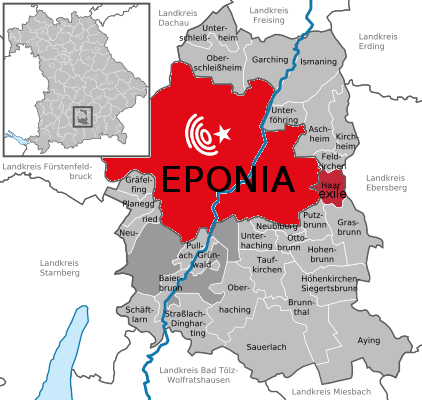

EVERYONE at the European Patent Office (EPO) certainly knows that António Campinos has done absolutely nothing to undo Battistelli's damage to (or attacks on) the Boards of Appeal. He has not restored patent quality either; in his blog he promotes software patents in Europe. It's pretty sickening.
"Why is Corcoran suddenly being defamed again?"We were not planning to publish this series' second part until tomorrow (previous part published this morning), but things are getting out of hand because the EPO has come up with new lies (warning: epo.org link), calling itself "diverse organisation" just earlier today. "The EPO published its Social Report 2018," says the summary/outline, "which offers a comprehensive overview of staff and working conditions at the Office."
Interesting timing. The EPO is not diverse at all. The management is French and examiners are mostly German men. But this is the EPO, where Germans can accuse an Irish judge of being "Nazi" because he read something about history (in which Britain was on the opposing side). It's like accusing a Chinese/Nigerian businessman in the United States of KKK membership. Concurrently, and also today, we saw new attacks on this judge, Patrick Corcoran (written in German and we won't link to it; promoted just as the new case about Haar commences, in response to tweets from last year). The person who received this response wrote: "On the contrary, in this case there is no doubt that Mr. Patrick Corcoran is innocent, since he was acquitted by ILOAT of all allegations / accusations against him! Nice try to discredit him, but this has failed miserably!"
Why is Corcoran suddenly being defamed again? Why today? Well, the 'exile' of all his colleagues to Haar is being discussed. They could really use a distraction, right? Nothing like an "armed and dangerous Nazi" to justify an exile -- an act of collective punishment the Nazis were so infamous for (never mind the connotation associated with Haar because of the mass 'euthanasia' there). And never mind if the EPO is giving huge amounts of money to an actual Third Reich firm. Reversal of narratives seems to be key here (illusion of parity). So the EPO is "an attractive, modern and diverse organisation," according to the title of today's sole publication from the EPO. Moreover, shortly after “Quality Report” (all they did was put “Quality” in the title) we're told there's a "Social Report" ("Social" in the title) and it was promoted in Twitter on Monday. Perfect distraction? Meanwhile, as IP Kat's Rose Hughes has just put it, quality of European Patents gives room for concern. The EPO is nowadays more permissive on patent scope then even the US. "In the US," as Hughes explained, "the Sequenom NIPT patents have fallen foul of Section 101."
We don't suppose the Boards of Appeal are going to change that. And also promoted in Twitter on Tuesday morning was this nonsense: "In the coming years, we're aiming to work towards a complete digital transformation."
It's another tweet about the strategy "paper" from almost a fortnight ago. The PR/charm offensive is on high gear today. Just posted by Watermark's Christian Schieber was this self-promotional article about the EPO putting patent trolls on the fast lane and pushing examiners to arm them faster, sloppily:
Effective from 1 July 2019, the European Patent Office (EPO) will be extending its Patent Prosecution Highway (PPH) programme with IP Australia…
Having arrived at the end of our summer journey through Europe, it can be stated that the national provisions on re-establishment of rights are similar to each other and to Art. 122 EPC, but there are also notable differences in the standard of care that the respective national jurisdictions require applicants and their representatives to comply with. While the EPO’s ââ¬Å¾all due care“ standard seems to be applicable, more or less, in DE, FR, IT, ES and NL, the UK and – as of now – NO apply a more applicant-friendly standard, i.e. that the loss of rights must have occurred unintentionally. It will be interesting to see whether other countries will follow Norway’s example and move towards this more applicant-friendly standard.